-

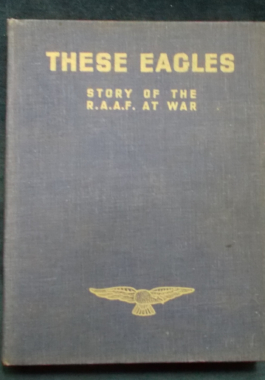 With stories, sketches and photographs from the servicemen and women of the Royal Australian Air Force. No 'Boys Own' adventures here - these are real tales of man's condition, actions and reactions in wartime. From Out Of Control: To watch Mother Earth rushing up to meet you while you are fighting a spine at a mere few thousand feet does not increase your expectation of a long and useful life... There's the ground crew blokes, the high-altitude men, the U-boat spotters, the Old New Contemptibles; the ladies of the W.A.A.A.F get a salute from the boys. There's even cartoons - such as one would expect from an Aussie view of things. Illustrated with sketches, black and white photographs and colour plates.
With stories, sketches and photographs from the servicemen and women of the Royal Australian Air Force. No 'Boys Own' adventures here - these are real tales of man's condition, actions and reactions in wartime. From Out Of Control: To watch Mother Earth rushing up to meet you while you are fighting a spine at a mere few thousand feet does not increase your expectation of a long and useful life... There's the ground crew blokes, the high-altitude men, the U-boat spotters, the Old New Contemptibles; the ladies of the W.A.A.A.F get a salute from the boys. There's even cartoons - such as one would expect from an Aussie view of things. Illustrated with sketches, black and white photographs and colour plates. -
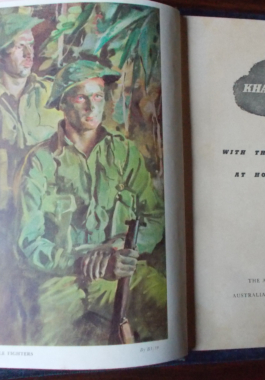
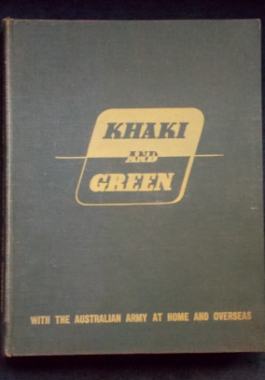
With the Australian Army at Home and Overseas. Published for the Australian Military Forces by the Australian War Memorial, Canberra, 1943. With news and information - literally - as it happened from the Middle East and the South West Pacific. Chapters and writings include: Alamein Christmas Shops; Luck and Gus; I Saw a Panzer Attack; The Log Which Wasn't; Moon Madness; Survival of the Fairest; No Mates in the Army and much more, all written by Australia's Own. With stories, yarns, cartoons, poems, fabulous colour plates, black and white illustrations and photographs. Real war history.
-

Munda Trail: Eric Hammel
$10.00The Solomon Island archipelago stretches in a roughly east-west direction from New Guinea to San Cristobal. For the Imperial Japanese forces in 1942, it was a natural highway into the South Pacific. When checked at Guadalcanal, these forces realized they had moved east too quickly, and that their defeat was caused in part by inadequate air bases between the front and their head-quarters at Rabaul, more than six hundred miles away. As the last Japanese battalions were wrecking themselves against the Marine defensive perimeter on Guadalcanal, the decision was made to build the Munda airfield on New Georgia, right in the middle of the Solomons chain. This is the dramatic, harrowing story of green American soldiers encountering for the first time impenetrable swamps, solid rain forests, invisible coconut-log pillboxes, tenacious snipers tied into trees, torren-tial tropical rains, counterattack by enemy aircraft and naval guns, and the logistical nightmare of living and moving in endless mud. -
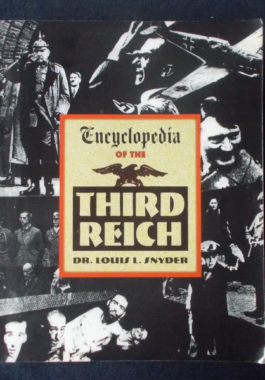 Regarded as a definitive selection of historical information covering all the important people of the time (Resistance members and Nazis); military operations; concepts; organisations of the era as well as those regarded as having been influential to the Nazi ideology. There is a chronology of every important date in the history of the Third Reich from the fall of the Weimar Republic to the end of World War II; a bibliography of pertinent books and articles; essays on art, architecture, film, theater, music, sports, religion, and education; documents such as Hitler's Last Will and his Political Testament and over 200 period photos and drawings.
Regarded as a definitive selection of historical information covering all the important people of the time (Resistance members and Nazis); military operations; concepts; organisations of the era as well as those regarded as having been influential to the Nazi ideology. There is a chronology of every important date in the history of the Third Reich from the fall of the Weimar Republic to the end of World War II; a bibliography of pertinent books and articles; essays on art, architecture, film, theater, music, sports, religion, and education; documents such as Hitler's Last Will and his Political Testament and over 200 period photos and drawings. -

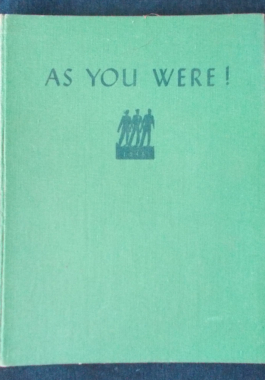 A Cavalcade of Events with The Australian Services from 1788 to 1946. Articles and notes; art and jokes; poetry and cartoons... from the servicemen - and even some of the women - who were there. This is no dry history of battles and dates - it's a memorial to all those fallen in war. Just some of the items in this volume: The Blood-bath at Cowra, E.V. Timms; When Sydney Fought A Zeppelin, 'Matelot'; Bless 'Em All, Biddy Moriarty (Australian Red Cross); Stout Hearts That Never Failed, Ion Idriess; A Service Girl In Japan, A.J. Poppins; and much more, together with art and photographs in black and white and colour - and of course, some typical Australian irreverent cartoons.
A Cavalcade of Events with The Australian Services from 1788 to 1946. Articles and notes; art and jokes; poetry and cartoons... from the servicemen - and even some of the women - who were there. This is no dry history of battles and dates - it's a memorial to all those fallen in war. Just some of the items in this volume: The Blood-bath at Cowra, E.V. Timms; When Sydney Fought A Zeppelin, 'Matelot'; Bless 'Em All, Biddy Moriarty (Australian Red Cross); Stout Hearts That Never Failed, Ion Idriess; A Service Girl In Japan, A.J. Poppins; and much more, together with art and photographs in black and white and colour - and of course, some typical Australian irreverent cartoons. -
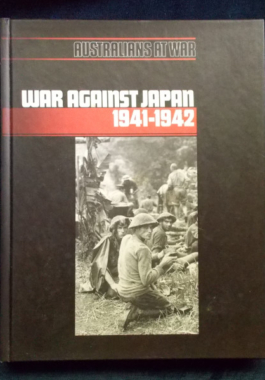 Time-Life series Australians At War, Volume 1. In South East Asia the European colonists lived an indolent life while to the north, the Japanese marched hungrily to war. In Singapore and up-country Malaya, there was still time for socialising and for serving officers to deck themselves out in their mess-dress finery for balls and dances, and for their wives to enjoy all the comforts that colonial service and a strong pound sterling could bring. Garrison life was an endless round of parties, parades and presentations at Government House. But with the splendour, there was a blind refusal in London and the Far East to see just how expansionist and bellicose the Japanese really were. Lavishly illustrated with archival black and white photographs and colour reproductions of contempory art.
Time-Life series Australians At War, Volume 1. In South East Asia the European colonists lived an indolent life while to the north, the Japanese marched hungrily to war. In Singapore and up-country Malaya, there was still time for socialising and for serving officers to deck themselves out in their mess-dress finery for balls and dances, and for their wives to enjoy all the comforts that colonial service and a strong pound sterling could bring. Garrison life was an endless round of parties, parades and presentations at Government House. But with the splendour, there was a blind refusal in London and the Far East to see just how expansionist and bellicose the Japanese really were. Lavishly illustrated with archival black and white photographs and colour reproductions of contempory art. -
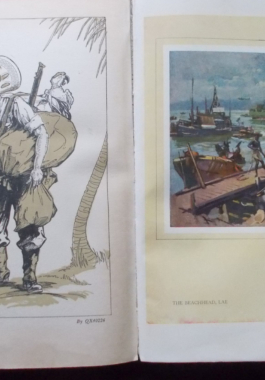
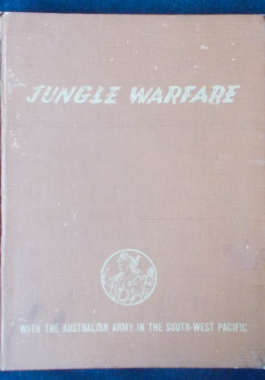
Published for the Australian Military Forces by the Australian War Memorial, Canberra, in 1944. Full of sketches, poems, colour plates and photographs, cartoons and jokes, as well as those fabulous yarns that Aussies can tell so well - and all by the service personnel who were engaged in the South West Pacific during World War II. Contributors are identified only by their service numbers...so your grandfather or great grandfather may be among the authors. Here we do not find battle statistics, plans or generals - just the down to earth Australian Diggers.
-
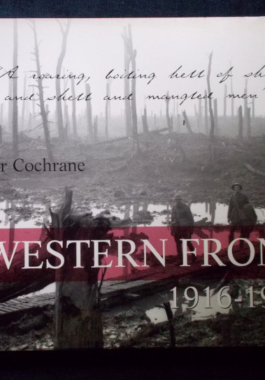 A fascinating, unsettling and unforgettable view of one of the most compelling events in modern history. For all the significance attached to the doomed heroism at Gallipoli, the Western Front was the single greatest wartime tragedy that elicited the greatest sacrifice. Of the 61,720 who died in the course of the war, 46,319 were lost at the Western Front. In a matter of weeks, more Australians were slain in or or two battles than in the entire eight months at Gallipoli. Those terrible years, 1916 to 1918, represent the whole panoply of modern warfare. This is an examination of the record of official and unofficial images in unexpected ways. It looks at the major battles of the campaign, the grim conditions endured by the soldiers, the workers of the massive support system, the valiant efforts of stretcher-bearers and medical workers and, finally, the run of victories under Monash in which Australian soldiers distinguished themselves above and beyond their numerical presence. Illustrated with black and white photographs.
A fascinating, unsettling and unforgettable view of one of the most compelling events in modern history. For all the significance attached to the doomed heroism at Gallipoli, the Western Front was the single greatest wartime tragedy that elicited the greatest sacrifice. Of the 61,720 who died in the course of the war, 46,319 were lost at the Western Front. In a matter of weeks, more Australians were slain in or or two battles than in the entire eight months at Gallipoli. Those terrible years, 1916 to 1918, represent the whole panoply of modern warfare. This is an examination of the record of official and unofficial images in unexpected ways. It looks at the major battles of the campaign, the grim conditions endured by the soldiers, the workers of the massive support system, the valiant efforts of stretcher-bearers and medical workers and, finally, the run of victories under Monash in which Australian soldiers distinguished themselves above and beyond their numerical presence. Illustrated with black and white photographs.




